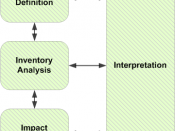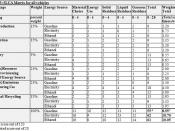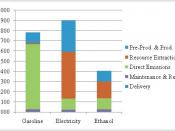My research objectives are:
* To create a consistent study of environmental effects associated with the production, use, maintenance, re-use, and disposal of alternative wood and non-wood materials used in light construction, i.e. from forest resource regeneration or mineral extraction to end use and disposal, thereby covering the product's entire life cycle from "cradle to grave".
* To develop an analytical framework for evaluating life cycle environmental and economic impacts for alternative, recycled materials in competing or complementary applications so that I can make consistent and systematic comparisons of options for selecting my materials.
LIFE CYCLE THINKING AND LIFE CYCLE ASSESSMENT
Consideration and assessment of a material or product's life cycle can be used to assess the environmental impacts of your services and/or products throughout their life cycle ("cradle to grave") help you identify ways to reduce these impacts and make cost savings.
Life Cycle Assessment (LCA) involves the collection and evaluation of quantitative data on the inputs and outputs of material, energy and waste flows associated with a product over its entire life cycle so that the environmental impacts can be determined.
Life Cycle Thinking (LCT) considers a product's life cycle and aims for a reduction of its cumulative environmental impacts. However, this approach is more qualitative and does not require the thorough data analysis that full scale LCA relies on. Considering the life cycle of a product + it's materials in a general way may, for example, lead to reducing packaging of products, using recyclable raw materials or improving the efficiency of the product when it is used by the customer. Waste can be reduced, energy can be saved and raw materials can be conserved.
To be truly effective life cycle thinking needs to become second nature for all those who come into contact with products. Educational and...



Timber
Thanks for your help, redlauren, and I also appreciate your writing this fine life cycle and cradle-to-grave analysis of timber. I also appreciate your writing a comment about your similarly titled essay as it saved me the effort of doing so. Issues such as recycling, waste minimization and ecological restoration are vital to maintaining our delicately balanced ecosystem. Good essay!
5 out of 5 people found this comment useful.